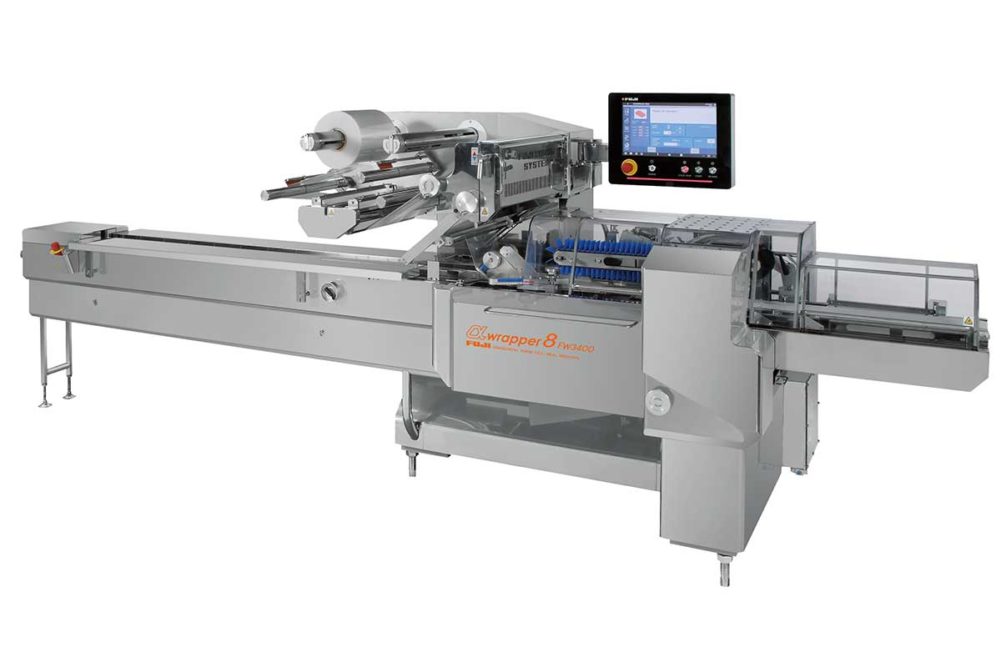There’s a famous scene in “I Love Lucy” when Lucy is working at a chocolate factory. She’s supposed to wrap the individual candies moving along a conveyor and make sure none gets through without the wrap. Of course, she cannot keep up. They go whizzing by, and she starts stuffing them everywhere. Hilarity ensues.
It’s a scenario any bakery that wraps products individually wants to avoid at all costs. Keeping pace with the production rate is just one of the challenges facing bakeries converting from bulk to single-serve horizontal form/fill/seal wrappers to reduce labor and ensure safety during the pandemic. Some bakeries serving retail, foodservice and in-store bakeries have had to make the switch.
“When they were supplying restaurants either in totes or crates or boxes, they didn’t actually have to wrap the product,” said Mark Finneran, United States sales representative, Niverplast. “Now all of a sudden, the pandemic has forced a reassessment of the protection that end-user wants, whether it’s a restaurant or individual consumer.”
Several bakeries have had to shift their focus to react to shifts in the market.
“Some of them had to make a quick decision on whether to switch over and do single serve for retail to make money,” said Angela McDaniel, marketing and sales coordinator, Formost Fuji Corp. “Because those that were providing for schools, for big restaurants that shut down, they had to make a switch to do something [else] or close down.”
Making the switch means not only keeping up with the production rate. It requires space and capital to change or upgrade equipment. The range of products being baked needs to be considered, and the right kind of packaging material and seal must be chosen while maintaining the high quality and integrity of the product.
“In working with every packaging opportunity, we rely on the product, the package, the loading, and the speed—all required information, as drivers to the best solution possible for our customers,” said Mike McCann, packaging specialist, Reiser.
Many packaging equipment manufacturers echoed that same sentiment. It’s important to look at the entire operation from top to bottom, determine each bakery’s needs and resources, and consult the experts to find the best packaging options.
One of the first things that must be considered is the production rate and capacity requirements of the bakery’s oven or freezer. Bakeries must also determine whether to go with a manual, automated or semi-automated system.
[Related reading: The right equipment, packaging materials vital to HFFS success]
Manual labor allows workers to be deployed to feed products into a flow packer, which makes implementation immediate and easy. Also, workers provide flexibility and can adapt quickly to changes in product or for troubleshooting an issue.
“Depending on the output of your baking line [products/minute] it may be highly possible to manually load the infeed of flow pack machines to make your individually wrapped products,” said Josh Becker, product manager, bakery/confection, Harpak-Ulma. “From a capital investment perspective, this would be lower but would require more labor on the front end.”
Having multiple operators also creates safety concerns during a pandemic.
“I’m seeing bakers come to me that have manual operations,” said Bill Kehrli, vice president of sales and marketing, Cavanna Packaging USA. “They’re saying they don’t want the manual operators in the food factory anywhere near their food, breathing onto the food for fear of contaminating it.”
Automated systems can handle products quickly, and bakers can choose from a variety of robotic and vision equipment.
“To really get volume, you need some automation, and you need the equipment,” said Dennis Gunnell, president, Formost Fuji Corp.
In addition to picking and placing products onto the HFFS machines, automated systems can provide quality control by checking size, weight and color as well as running the product through metal detection and counting the product. Ideally, the equipment should handle a diverse mix of products with as little changeover as possible.
Redundant systems keep production flowing when problems arise. It’s also important to ensure the secondary packaging line keeps up with the primary packaging.
Some machinery can be adjusted quickly. For instance, some of Reiser’s HFFS machines used for bulk foodservice can be converted to individual pack solutions by adding tooling and converting web widths in the field, Mr. McCann said.
All new customized equipment often takes upward of several months to build and install. It also may require a sizable investment, although it’s an expense on the minds of decision-makers at many bakeries right now. In Baking & Snack’s 2021 Capital Spending survey of wholesale bakeries, 85% said packaging was among their top equipment needs.
This article is an excerpt from the February 2021 issue of Baking & Snack. To read the entire feature on horizontal FFS, click here.




